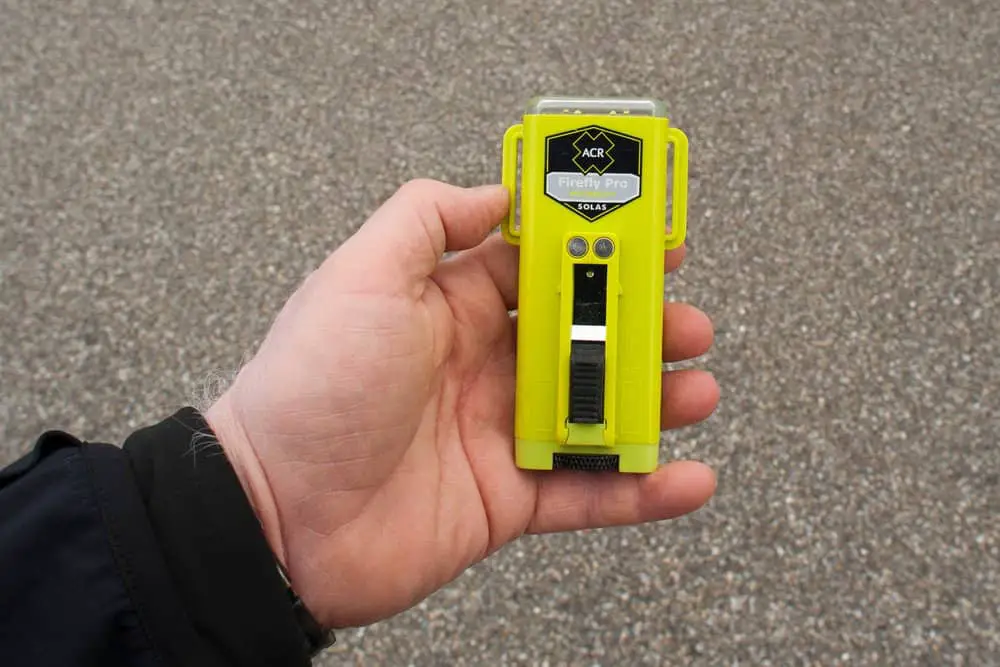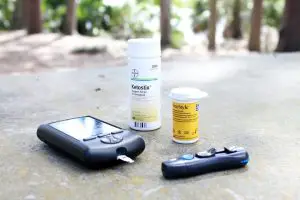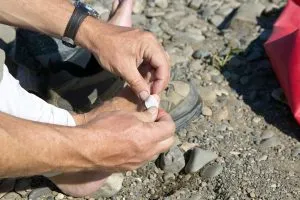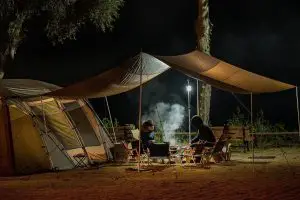Should You Use a Personal Locator Beacon for Hiking?

Getting lost on the trails is never a fun thing. Knowing what to do when it happens can be the difference between a safe return and a tragic outcome. One device that comes to your aid if you do get lost, is a personal locator beacon (PLB). f you are an avid hiker or if you simply enjoy spending time in the great outdoors, then a PLB should definitely be something that you consider carrying with you.
Quick Links
What Is A Personal Locator Beacon?
Personal locator beacons (PLBs) are small, handheld devices that emit a distress signal when activated. They’re designed for use in emergency situations when you’re unable to call for help yourself. PLBs can be a useful tool for hikers, especially if you hike solo or in remote areas, like the backcountry, where cell phone reception is unreliable or nonexistent.
Now I don’t know about you, but a majority of the trails I’ve been to in my life have had little to no cell service. Now imagine if you were hiking solo, took a few off-path trails, and it started to get dark out. Suddenly, you’re lost and have no way to call for help. This is where a PLB would come in extremely handy.
How Do Personal Locator Beacons Work?
When you activate a PLB, it sends out a distress signal that includes your GPS location. The signal is picked up by satellites, which then relay the information to emergency responders. Once they receive your distress call, rescuers will be able to locate you and provide the assistance you need.
One important thing to note is that PLBs are a one-way communication device – they aren’t walkie-talkies. This means that you will not be able to receive any messages or phone calls once you’ve activated your beacon.
Is A Personal Locator Beacon Right For You?
Now that you know a little bit more about PLBs, you might be wondering if one is right for you. Here are a few things to consider:
- Are you an experienced hiker? If you’re new to hiking, then a PLB might not be necessary. However, if you’re an experienced hiker who often hikes solo or in remote areas, then a PLB could be a good idea. If you have a tendency to explore uncharted territory or veer off the beaten path (like me), then a PLB could give you some peace of mind.
- Do you have a cell phone with you? If you always hike with a cell phone, then you might not need a PLB. However, if you don’t have a cell phone or if you often hike in areas with unreliable cell reception, then a PLB could come in handy.
- Can you afford it? PLBs can be expensive, so you’ll need to decide if the cost is worth it. Typically, the prices range between $300-$400. However, keep in mind that the peace of mind a PLB provides is priceless.
- Do you know how to use it? If you decide to get a PLB, make sure you take the time to learn how to use it properly and get it registered. That way, you’ll be prepared in case you ever need to use it for real.
All in all, personal locator beacons can be a valuable tool for hikers and can mean the difference between life and death sometimes.
When You Use a PLB, Who Comes To Rescue You?
In the United States, the primary agency responsible for rescuing hikers who have activated their PLBs is the U.S. Air Force Rescue Coordination Center (AFRCC) and the National Oceanic and Atmospheric Administration (NOAA).
Each PLB device actually needs to be registered first with the NOAA. You can use the NOAA Beacon Registration website to register your device. It’s simple to set up, but important to know.
The AFRCC is responsible for coordinating all civilian rescue efforts in the U.S. and its surrounding waters. Once they receive a distress call from a PLB, the AFRCC will contact the appropriate local rescue agency and provide them with your GPS coordinates. From there, rescuers will be able to locate you and provide the assistance you need.
What To Do if You Get Lost or Stranded
If you find yourself in a situation where you’re lost or stranded, the first thing you should do is stay calm. Remember, panicking will only make the situation worse. Once you’ve calmed down, spend a bit of time thinking about your options and what the best course of action would be BEFORE hitting the SOS button.
It’s important to note that once you call for help on your PLB – you can’t take it back. So that means even if you find your way back to the trailhead, rescuers will still be dispatched to your location. So if you do decide to use a PLB, be absolutely sure that you are in a life-threatening situation before you activate it. And, obviously, don’t use it for something silly.
Some common sense things to do if you find yourself lost or stranded are the following:
- Try to stay warm and dry
- Find shelter, if possible
- Conserve and ration your energy, food & water
- Don’t wander aimlessly
If you’re truly lost, the best thing you can do is stay in one place. This will make it easier for rescuers to find you. If you have a cell phone, use it to call for help. If you don’t have a cell phone or if you can’t get reception, then activating your PLB is your best bet.
How Accurate Are PLBs?
PLBs are designed to be as accurate as possible, but there are a few factors that can affect their accuracy, such as:
- The terrain you’re in
- The weather conditions
- Your GPS coordinates
That said, PLBs typically have an accuracy of within 100 meters – so you can be confident that rescuers will be able to find you if you need to use one.
Other Things To Keep In Mind With A PLB
There are actually a few more important things that I haven’t mentioned yet about the use of a PLB, which are as follows:
- Your PLB has a limited battery life, and you’re responsible for reaching out to an authorized servicing team to replace it. However, the batteries typically last 5+ years, so it’s not something that you would have to worry about too often.
- Besides the expensive price tag of a PLB, you may end up paying for the rescue – which can get VERY expensive. If it’s a government agency like the Coast Gaurd, they’ll cover the cost. However, it’s a volunteer-based group, you’ll most likely foot the bill, which can be upwards of $10,000! Is it worth your life? Probably.
- A PLB is a powerful tool, and it should only be used in a true emergency situation. Remember, once you hit that SOS button, there’s no taking it back. So be sure that you are in a life or death situation before you decide to use it.
Which PLB Should You Buy?
There are a few different things you’ll want to keep in mind when purchasing a PLB, such as:
- The weight
- Size
- Features
- Battery life
- Cost
There are a ton of different PLBs on the market, so it can be hard to decide which one is right for you. Thankfully, there are a few that are considered to be the “go-to” options when it comes to PLBs, such as the ACR ResQLink.

If you’re looking for a recommendation, I would suggest checking out the ACR ResQLink 400. If you can look past the price tag, it’s a great all-around PLB that has all the features you would need, and is typically considered one of the best out there.
It’s small and lightweight at only 5 oz., has a powerful 406 MHz signal, and also comes with a built-in strobe and infrared strobe light for nighttime rescues.
Conclusion
If you found this article helpful, please share it with your friends or family who might need it. And if you have any questions about PLBs, feel free to leave a comment below and I’ll do my best to answer them.
Here are just a few reasons why a PLB is a good idea for hikers:1. They







